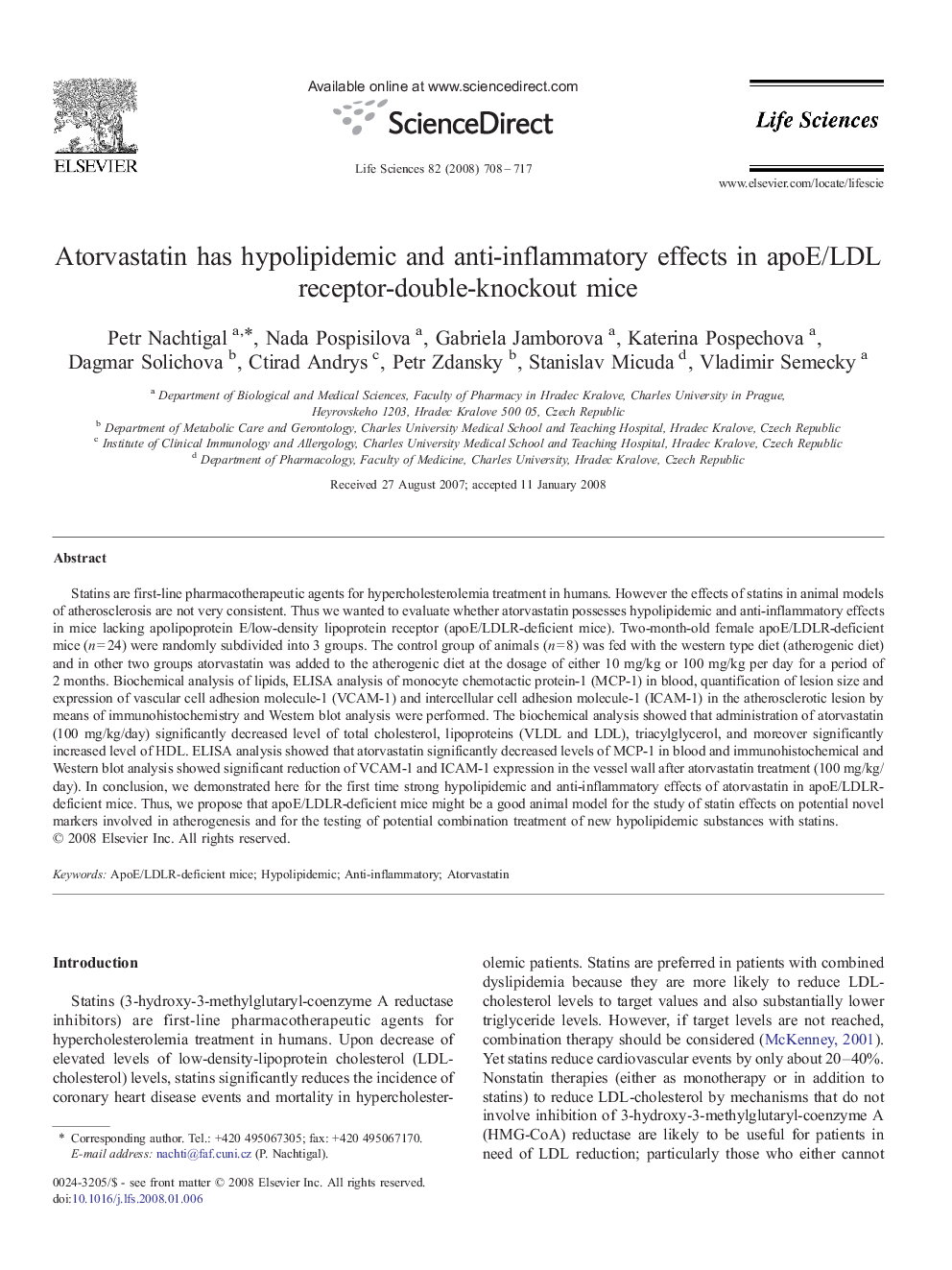| Article ID | Journal | Published Year | Pages | File Type |
|---|---|---|---|---|
| 2552615 | Life Sciences | 2008 | 10 Pages |
Statins are first-line pharmacotherapeutic agents for hypercholesterolemia treatment in humans. However the effects of statins in animal models of atherosclerosis are not very consistent. Thus we wanted to evaluate whether atorvastatin possesses hypolipidemic and anti-inflammatory effects in mice lacking apolipoprotein E/low-density lipoprotein receptor (apoE/LDLR-deficient mice). Two-month-old female apoE/LDLR-deficient mice (n = 24) were randomly subdivided into 3 groups. The control group of animals (n = 8) was fed with the western type diet (atherogenic diet) and in other two groups atorvastatin was added to the atherogenic diet at the dosage of either 10 mg/kg or 100 mg/kg per day for a period of 2 months. Biochemical analysis of lipids, ELISA analysis of monocyte chemotactic protein-1 (MCP-1) in blood, quantification of lesion size and expression of vascular cell adhesion molecule-1 (VCAM-1) and intercellular cell adhesion molecule-1 (ICAM-1) in the atherosclerotic lesion by means of immunohistochemistry and Western blot analysis were performed. The biochemical analysis showed that administration of atorvastatin (100 mg/kg/day) significantly decreased level of total cholesterol, lipoproteins (VLDL and LDL), triacylglycerol, and moreover significantly increased level of HDL. ELISA analysis showed that atorvastatin significantly decreased levels of MCP-1 in blood and immunohistochemical and Western blot analysis showed significant reduction of VCAM-1 and ICAM-1 expression in the vessel wall after atorvastatin treatment (100 mg/kg/day). In conclusion, we demonstrated here for the first time strong hypolipidemic and anti-inflammatory effects of atorvastatin in apoE/LDLR-deficient mice. Thus, we propose that apoE/LDLR-deficient mice might be a good animal model for the study of statin effects on potential novel markers involved in atherogenesis and for the testing of potential combination treatment of new hypolipidemic substances with statins.
